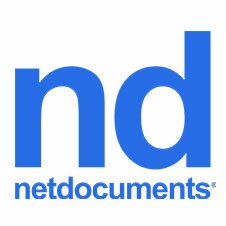Netdocuments: The future is cloud-native
ILTA’S 2021 Technology Survey revealed that 41% of law firms are choosing cloud solutions with every upgrade. But as Durgesh Sharma, Chief Information Officer at Littler Mendelson P.C., explains: “Cloud-native solutions are winning the race to meet the immediate demands of consumers.”
Why is cloud-native the way of the future? These solutions take optimal advantage of the cloud’s elasticity and scalability and reduce dependency on infrastructure while providing work-from-anywhere capabilities. In other words, cloud-native technologies support the modern work environment in an ideal way.
What is Cloud-Native?
Cloud-native architecture and applications are built for and operate in the cloud. They take full advantage of the cloud model, including its scalability, elasticity, resiliency, flexibility, and security. The Cloud Native Computing Foundation defines cloud-native technologies this way:
“Cloud-native technologies empower organisations to build and run scalable applications in modern, dynamic environments such as public, private, and hybrid clouds. Features such as containers, service meshes, microservices, immutable infrastructure, and declarative application programming interfaces (APIs) best illustrate this approach.”
From a practical standpoint, a cloud-native approach supports continuous innovation and responsiveness, both in the application itself via iteration and feature development and in what the application achieves for a business. Cloud-native applications enable firms to move quickly and with agility.
Benefits of Going Cloud-Native
While resources may be required to make the transition to cloud-native software, the investment pays off in multiples. Let’s take a closer look at the many benefits of going cloud-native.
Be More Resilient
The nature of the complex modern world is unpredictable. Infrastructure outages occur for a variety of reasons ranging from cyberattacks to weather events to natural disasters. Every organisation can expect to experience an outage at some point. Because cloud-native applications are architected with redundancy, they don’t depend on on-premises infrastructure and continue to function as normal even during an infrastructure outage.
Move Quickly
The cloud supports agile development and deployment. Cloud-native applications are continually being improved and updated with new features, empowering businesses to quickly benefit from rapid innovation cycles. Greater technology capabilities improve every business.
Additionally, having the flexibility of the cloud allows you to flex the amount of storage and computing power needed much easier than on-premises server-based environments. Having applications that are built to best take advantage of this flexibility is critical. On-premises apps that have simply been moved to the cloud will rarely, if ever, have the same performance or capabilities as cloud-native ones.
Be More Productive with Less Downtime
Cloud-native solutions deliver software updates automatically. For this reason, firms can “set it and forget it” when it comes to updates, saving IT teams time and effort, freeing them up for more high-value tasks. And because updates are completed via a continuous delivery and deployment methodology, users experience much less downtime.
Gain Peace of Mind with Standards-Based Flexibility
Cloud-native applications are highly flexible because they are standards-based. This translates to easy portability — you’re not locked in with a vendor because your data is stuck within the application.
Why Cloud-Native is the Future
Organisations are moving to the cloud to benefit from its many capabilities, including its ability to effortlessly connect remote workers and its cost-effective delivery of near-unlimited storage and computing power. The cloud efficiently supports competitive advantages, including hyper-automation and machine learning.
Sharma from Littler Mendelson had this to say about the trend toward cloud-native as a requirement in organisations:
“This isn’t about organisations requiring the use of cloud-native solutions — of course, anyone building from scratch at this point is developing natively — it’s that cloud-native solutions are winning the race to meet the immediate demands of consumers, including true scalability, seamless integration opportunities, compliance with data sovereignty laws and other local regulations, and the ability to bring solutions to market quickly. On-prem technology vendors that are supporting their current products and simultaneously trying to build a cloud solution are naturally going to lag behind, and the user experience could suffer because the vendor’s resources are stretched too thinly.”
To position your firm effectively for the future, seek out cloud-native solutions when making IT investments, and be sure that the solutions you choose seamlessly integrate with one another. Ensure that the technology partners you are selecting have deep expertise in cloud solutions in order to best leverage its additional capabilities and efficiency gains.
Want to see more trends? Download 10 Legal Tech Trends for 2022 and Beyond for Law Firms and Corporate Legal Departments.



